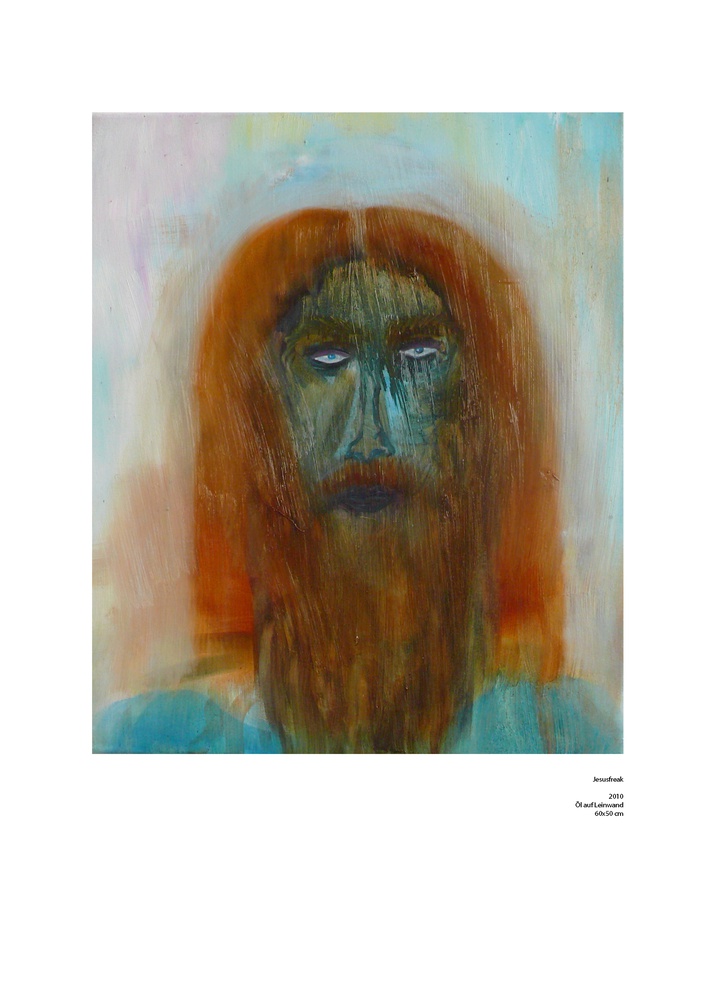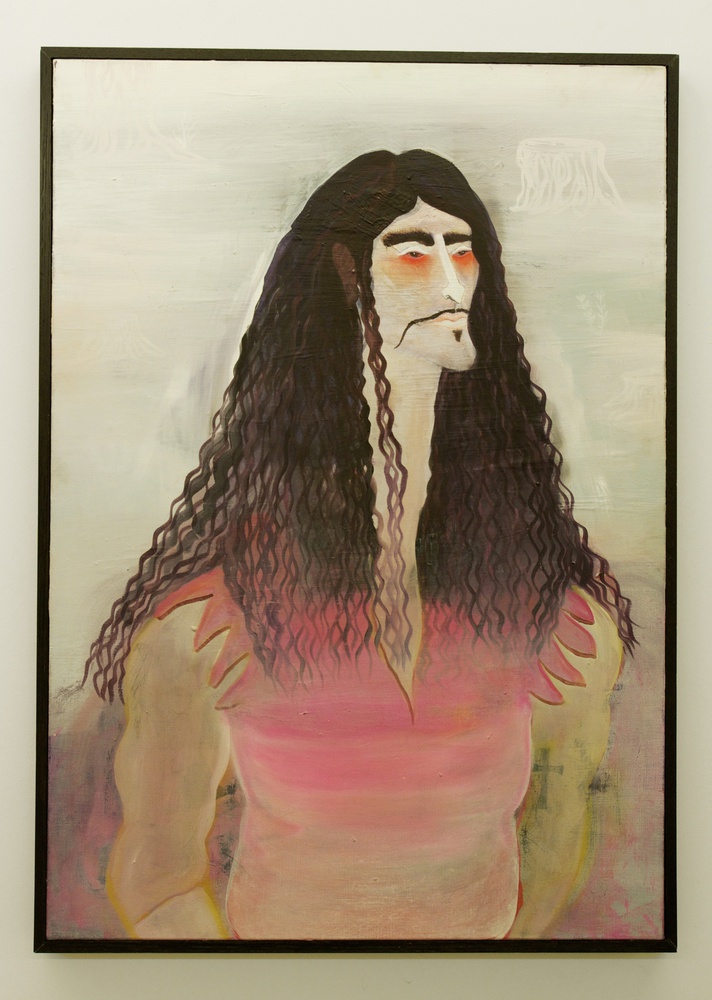Marie Aly’s very colourful paintings are the product of a method in which intuition plays the main part. Without making a detailed plan first, the depicted scenes and people are created spontaneously while painting. To get started, she looks for concrete motifs and themes in magazines, on record covers and in other media. A surprisingly specific topic and formal principles such as colour and composition determine how the image develops after that. As Marie Aly does not work with a detailed plan and sketches first, her paintings each contain their own history of artistic possibilities and limitations – ranging from various layers of paint and thick lines to extremely refined details.
She places her characters in close-up or in imaginary dream worlds that remind us of the exotic landscapes in Henri Rousseau’s or Paul Gauguin’s paintings. The figures often represent a quest for androgyny: male becomes female and vice versa. They originate from a world of high and low culture: art history or Marie Aly’s everyday surroundings.
Another element of her work are religious references. There are clear symbols such as crosses and haloes, and visual references to religious art such as the 15th century painter Matthias Grünewald. Clearly, Marie Aly is fascinated by (contemporary) icons. She is not only fascinated by religious traditions, but also by ambiguity: the way in which the everyday and the divine are combined in one image. By calling notions such as aura, inspiration and the sublime into question she plays with this ambiguity in her paintings.




